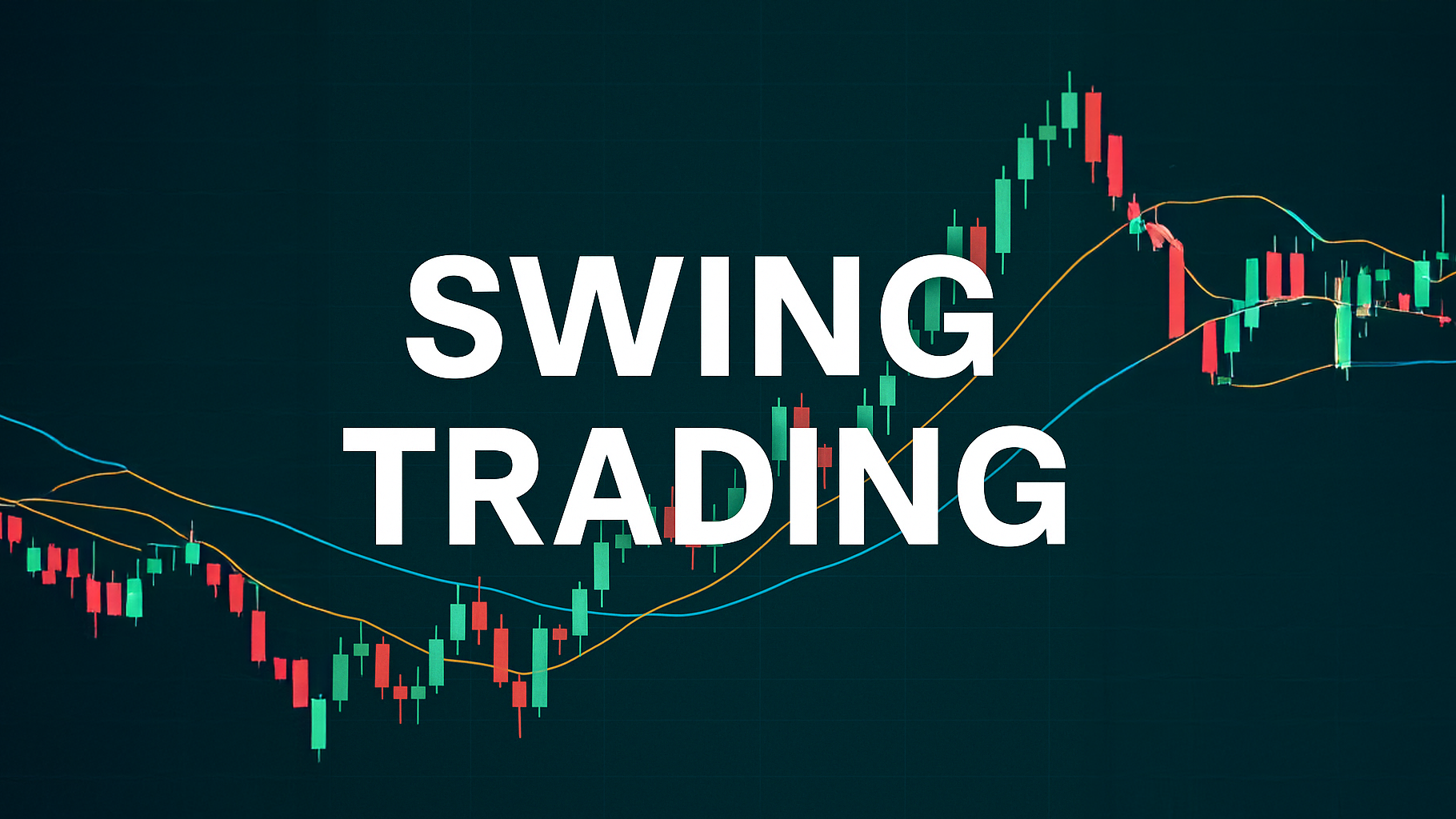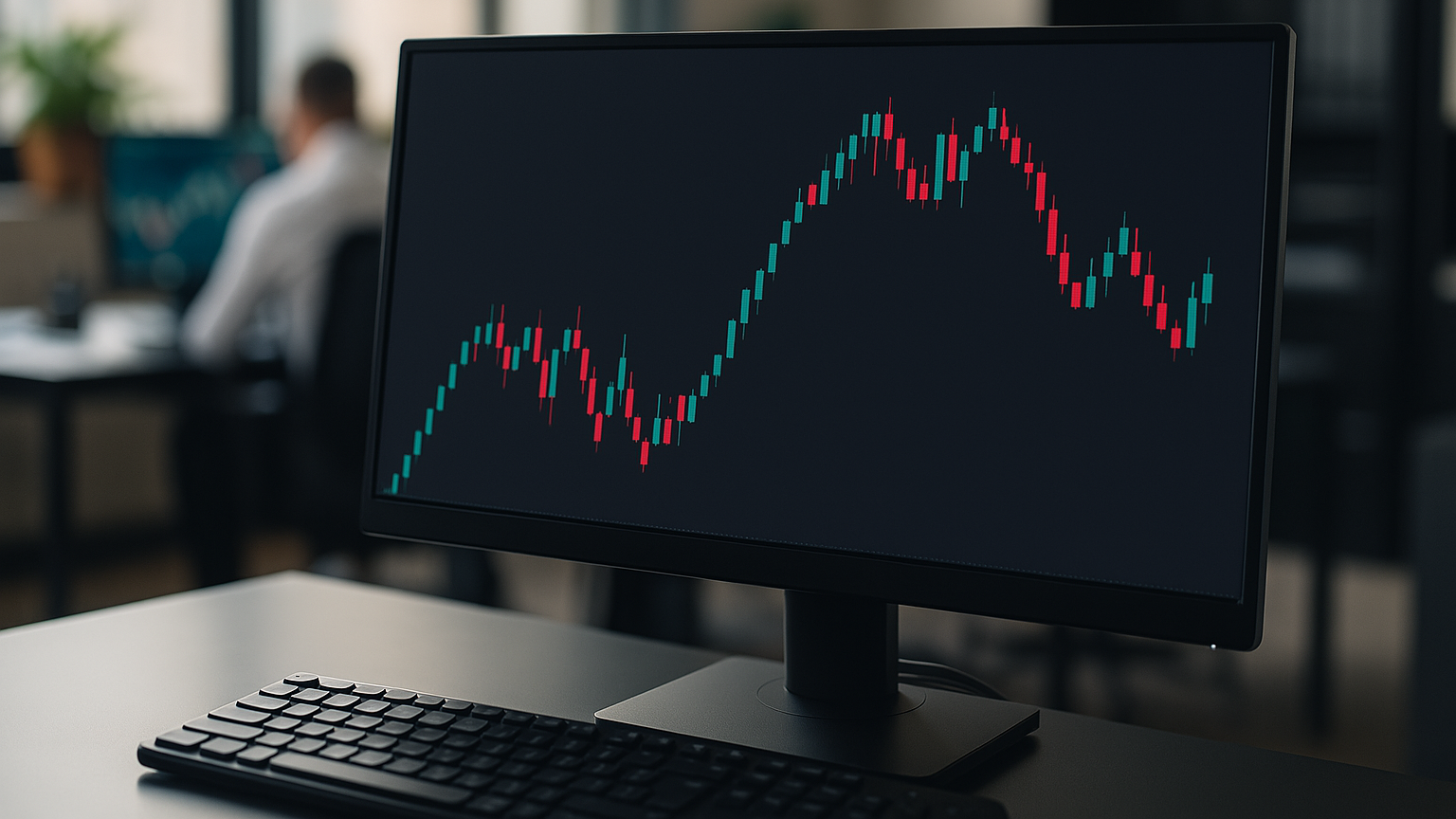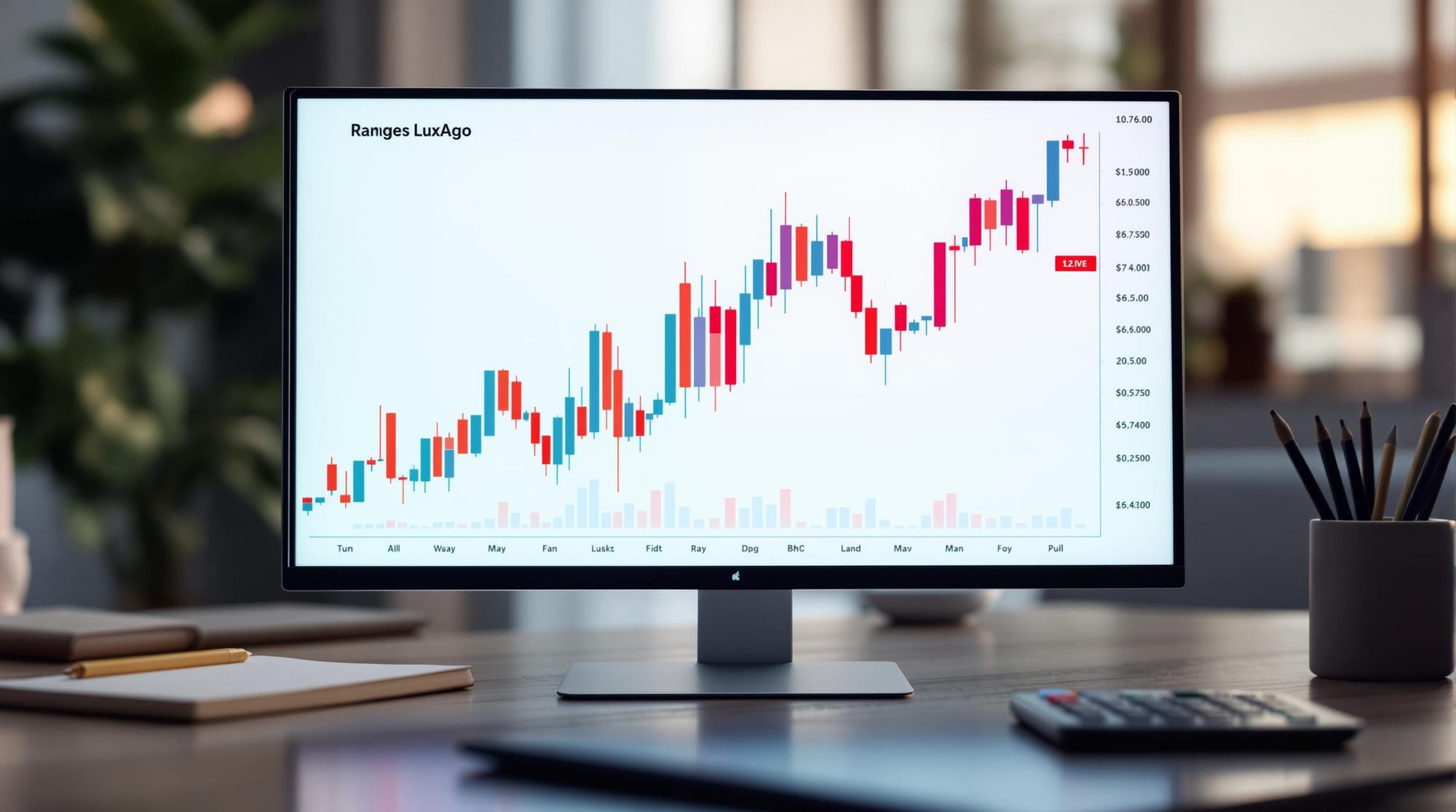Learn how to leverage technical indicators like Moving Averages, RSI, and MACD to enhance your trading strategies and make informed decisions.
Want to make smarter trading decisions? Technical indicators analyze price, volume, and market trends to provide actionable insights. They help traders identify trends, manage risks, and time their trades effectively.
Key Takeaways:
- 4 Main Types of Indicators: Trend (e.g., Moving Averages), Momentum (e.g., RSI), Volume (e.g., OBV), and Volatility (e.g., Bollinger Bands).
- Best for Beginners:
- Moving Averages: Spot trends with SMA or EMA.
- RSI: Identify overbought or oversold conditions.
- MACD: Confirm trends and reversals.
- Effective Combinations:
- MACD + RSI: Filter false signals.
- Moving Averages + Volume: Strengthen trend confirmations.
- RSI + Bollinger Bands: Pinpoint reversals in volatile markets.
Start by testing these strategies in a demo account and keep your charts simple to avoid confusion. Ready to dive deeper? Let’s explore how to use these tools effectively!
Technical Indicators for Beginners – Moving Average, RSI and MACD
4 Main Types of Indicators
Technical indicators are grouped into four main categories. Each one focuses on a specific aspect of the market to assist in making trading decisions.
Trend Indicators
These indicators help confirm the direction of market trends visually. For example, in 2022, Tesla experienced a "Golden Cross" when its 50-day SMA crossed above the 200-day SMA. This event preceded a 38% price increase over three months [1].
Momentum Indicators
Momentum indicators measure the strength behind price movements. They’re particularly useful for spotting potential reversals when prices hit extreme levels. For instance, these indicators can highlight when a market is overbought or oversold.
Volume Indicators
Volume indicators analyze trading activity to validate price movements. For example, when the On-Balance Volume (OBV) rises even as prices fall, it can signal accumulation – hinting at a possible rally.
"Volume indicators are often considered leading indicators, as they can signal potential price movements before they occur" [7]
Volatility Indicators
These indicators assess price range and market risk. Bollinger Bands, for instance, create adjustable price boundaries based on market volatility. When prices touch an outer band, traders often look for signs of a reversal [4].
Knowing these categories is the first step toward combining indicators effectively – a topic we’ll dive into next.
3 Basic Indicators for New Traders
Get started with these three key indicators to create actionable trading strategies:
Moving Averages Guide
Moving averages (MAs) help smooth out price data, making it easier to spot trends. There are two main types:
- Simple Moving Average (SMA): Calculates the average price over a set period, giving equal weight to all data points.
- Exponential Moving Average (EMA): Focuses more on recent prices, reacting faster to market changes. For instance, a 20-day EMA assigns a 9.52% weight to the latest price [1] [2].
| Moving Average Type | Best Used For | Typical Settings |
|---|---|---|
| SMA | Long-term trends | 50, 100, 200 days |
| EMA | Short-term trading | 5, 10, 20 days |
| Crossover Strategy | Trend confirmation | 50/200 SMA |
A study of S&P 500 stocks from 1990 to 2009 revealed that a 50-day and 200-day moving average crossover system delivered an average annual return of 5.4% [9]. These indicators are even more effective when paired with momentum indicators like RSI.
RSI Basics
The Relative Strength Index (RSI) measures momentum on a scale of 0 to 100. It highlights overbought conditions when above 70 and oversold conditions when below 30 [7].
Research shows that RSI readings below 30 indicate oversold conditions 75% of the time, while levels above 70 signal overbought conditions with 72% accuracy [7].
"RSI can be used to identify divergences between price and momentum, potentially signaling trend reversals" [7].
Traders can fine-tune RSI settings based on their trading style:
- Short-term trading: 9–11 periods
- Standard trading: 14 periods
- Long-term analysis: 21–25 periods
Adjusting RSI settings allows traders to align the indicator with their preferred timeframes, which becomes even more useful when combined with other strategies.
MACD Fundamentals
The Moving Average Convergence Divergence (MACD) indicator has three parts:
- MACD line: The difference between the 12-period and 26-period EMAs
- Signal line: A 9-period EMA of the MACD line
- Histogram: A visual representation of the gap between the MACD and signal lines
A backtest of the S&P 500 from 2000 to 2020 found that MACD delivered profitable signals 62% of the time [8]. A strong buy signal occurs when the MACD line crosses above the signal line, both are above zero, and the histogram expands.
Day traders often use shorter periods like 5, 35, 5, while swing traders stick to the standard 12, 26, 9 settings. This layered approach makes MACD a powerful tool for confirming signals from other indicators.
Indicator Combinations That Work
Using multiple indicators together can confirm signals and reduce false readings. Pairing complementary methods has been shown to improve trading accuracy by 23% compared to relying on single-indicator strategies [9].
MACD + RSI Strategy
This combination helps cut through market noise. The MACD identifies the overall trend direction, while the RSI pinpoints timing for entries and exits.
| Signal Type | MACD Condition | RSI Condition | Action |
|---|---|---|---|
| Buy Signal | MACD line crosses above signal line | RSI below 30, moving upward | Buy |
| Sell Signal | MACD line crosses below signal line | RSI above 70, moving downward | Sell |
Using these two together reduces 65% of false signals compared to using the MACD alone [6].
Moving Averages + Volume
Pairing moving averages with volume analysis adds strength to trend confirmations. Over a 12‐month period, this approach has resulted in a 17% increase in profitable trades [7].
Key signals to watch for:
- A moving average crossover that aligns with a spike in volume
- On‐Balance Volume (OBV) trending in the same direction as the price
- Consistent volume growth supporting the trend
RSI + Bollinger Bands
This combination is particularly effective when applied alongside volatility analysis. Here's how to set it up:
- Bollinger Bands: 20 periods, 2 standard deviations
A strong trade signal occurs when:
- The price touches the lower Bollinger Band
- RSI indicates oversold conditions
- The price starts moving back toward the middle band
"RSI and Bollinger Bands together can help traders identify potential breakouts in ranging markets with increased accuracy, particularly when combined with volume confirmation" [12].
Make sure both tools align before entering a trade. For instance, a long position could be taken when the RSI moves above 30 as the price rebounds from the lower Bollinger Band.
Setup Guide
This section walks you through turning the indicator combinations we discussed earlier into practical setups.
Platform Setup Steps
Here’s how to get started:
- Chart Preparation: Open the chart for your chosen asset and select your preferred timeframe. Then, click the "Indicators" menu at the top of the chart.
- Adding Indicators: From the menu, add the indicators you've decided to use.
Indicator Settings
Adjust the settings to match your trading needs. For instance, if you're trading in highly volatile markets like cryptocurrencies, consider increasing the indicator periods for better accuracy.
Alert Setup
To set up alerts, right-click on the chart, choose "Create Alert," and configure the Moving Average (MA) Cross condition. Then, select how you want to be notified.
For a more advanced setup, combine alerts. For example, set up alerts for MACD crossovers that align with RSI readings in overbought or oversold zones, as outlined in the strategy section. This approach can help you catch more precise trading opportunities.
Common Beginner Mistakes
Trading with technical indicators can be tricky for beginners. Recognizing these common errors can help you avoid unnecessary losses and improve your trading approach.
Overcrowded Charts
A common issue is filling charts with too many indicators. According to a 2022 study by Trading Journal , traders using more than five indicators at once had a 37% lower win rate compared to those sticking with just two or three.
Why does this happen?
- Too much data leads to analysis paralysis.
- Conflicting signals from indicators cause confusion.
- It diverts attention from the most important factor: price action.
Misinterpreting Signals
Many new traders misunderstand overbought or oversold signals, especially during strong market trends. This can lead to poor decisions.
Here’s how to address this:
- Check signals across multiple timeframes.
- Look for price-indicator divergences for added confirmation.
- Adjust indicator thresholds to suit trending markets.
Ignoring Market Context
Indicators don’t work in isolation – they need to be used within the right market context. Here are some key aspects to consider:
| Market Aspect | Why It Matters |
|---|---|
| Dominant Trend Strength | Indicators behave differently in trending vs. ranging markets. |
| Trading Volume | Low volume makes signals less reliable. |
| Timeframe Alignment | Mismatched timeframes can throw off your strategy. |
AI Tools for Technical Analysis
Mastering manual analysis is essential, but AI tools are now giving beginners an edge in making better trading decisions. A 2023 FinTech News survey revealed that 58% of retail trading platforms now incorporate AI-assisted tools for technical analysis, up from 45% in 2020 [1] [11].
AI in Market Analysis
AI tools are elevating traditional technical indicators in several ways:
- Dynamic Adjustments: AI algorithms tweak indicator settings based on current market trends, cutting false signals by up to 30% compared to standard indicators [11] [4].
- Pattern Detection: These systems can spot intricate chart patterns that might go unnoticed by human analysts.
- Comprehensive Analysis: AI processes multiple data sources simultaneously, offering a broader perspective.
"The integration of AI has shown a 15% improvement in risk-adjusted returns compared to traditional technical indicators in out-of-sample testing over the past year", according to LuxAlgo's research team [3] [5].
LuxAlgo Platform Overview
LuxAlgo is a platform that provides a range of AI-driven features tailored for technical analysis. Its offerings include:
| Feature | Function | Benefit |
|---|---|---|
| Smart Indicators | Adaptive versions of core indicators | Adjusts to market changes |
| Pattern Detection | Identifies chart patterns in real time | Highlights trading opportunities |
| Multi-Timeframe Analysis | Confirms trends across timeframes | Delivers more reliable signals |
| Performance Analytics | Tracks strategy performance | Refines trading methods |
LuxAlgo's platform backtesting reveals that moving average crossover strategies become 22% more effective when paired with AI-generated signals [10] [3].
The platform also integrates alternative data, such as news sentiment and order flow patterns, alongside traditional metrics. However, it’s worth noting that 43% of beginners find AI decision-making too complex, according to the CFA Institute. LuxAlgo provides thorough documentation and clear explanations to make its AI features more accessible.
Next Steps
Now that we've covered key indicators and their combinations, it's time to focus on putting them into practice.
Main Points
Technical indicators are designed to help you make informed decisions. The key is understanding how they work together while keeping things simple – too much information can be overwhelming.
Starting Tips
Here are two practical steps to get started:
-
Test Your Strategies
Before diving into live trading, test your strategies in a demo account. Start with one combination at a time, like the MACD and RSI pairing mentioned earlier in Section 4. -
Track Your Results
Keep a detailed trading journal to monitor your performance. Research from Trading Journal shows that traders who track their trades in detail identify patterns 37% faster [7].
The path to successful trading lies in sticking to proven strategies and staying consistent. Use the indicator combinations and setups we've discussed as a strong starting point for building a dependable trading system.
FAQs
How to use MACD and RSI together?
If you're looking to combine MACD and RSI for trading, here's how you can make the most of this pairing:
The MACD and RSI duo can help identify strong trading signals when used correctly. Start by using the MACD to spot potential opportunities, then confirm those signals with RSI readings and volume trends for added confidence.
Here’s how to do it:
- Use a 14-period RSI to verify MACD crossover signals.
- Check if the On-Balance Volume (OBV) is trending upward (as discussed in Section 3).
- Ensure both indicators align simultaneously before acting.
| Aspect | What to Look For |
|---|---|
| Volume Confirmation | OBV trending upward supports the signal |
Pro Tip: This approach is particularly effective with assets like the S&P 500 index. Backtesting has shown a 62% accuracy rate for MACD signals when used this way [8].
"Traders can effectively combine MACD and RSI by using them to confirm each other's signals."
References
- Investopedia: Top 7 Technical Analysis Tools
- IG: How to Calculate and Use Moving Averages
- Investopedia: Moving Average
- Investopedia: Technical Analysis Strategies for Beginners
- BabyPips: Using Moving Averages
- Investopedia: How to Use Moving Average to Buy Stocks
- CME Group: Understanding Moving Averages
- NYT Licensing: What Is Content Development?
- TrendSpider: Moving Average Crossover Strategies
- Wright Research: Moving Average Trading Strategy to Buy Stocks
- Plus500: Technical Analysis Guide
- TraderSync: Trading Journal
- LuxAlgo: Ultimate RSI Indicator






